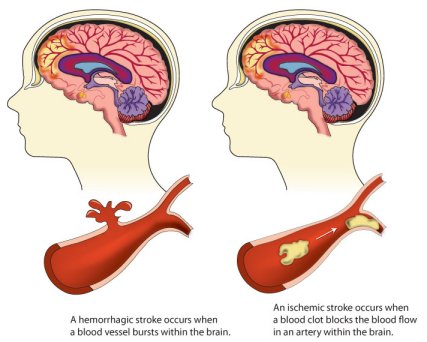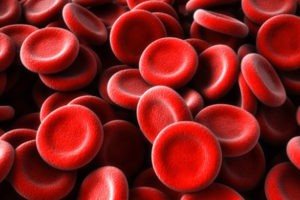
Recently Diagnosed or Relapsed? Stop Looking For a Miracle Cure, and Use Evidence-Based Therapies To Enhance Your Treatment and Prolong Your Remission
Multiple Myeloma an incurable disease, but I have spent the last 25 years in remission using a blend of conventional oncology and evidence-based nutrition, supplementation, and lifestyle therapies from peer-reviewed studies that your oncologist probably hasn't told you about.
Click the orange button to the right to learn more about what you can start doing today.
- You are here:
- Home »
- Blog »
- Multiple Myeloma »
- Multiple Myeloma- DVT, Stroke Risk
Multiple Myeloma- DVT, Stroke Risk

A heart which cannot pump sufficient blood to meet the body’s requirements (i.e., heart failure) will often, but not invariably, have a reduced ventricular ejection fraction.[6]
In the years following my conventional therapies I have learned to manage my DVT and stroke risk with evidence-based non-toxic, non-conventional therapies.
Aggressive, toxic, standard-of-care therapies led to remission, relapse, remission, end-stage and “nothing more we can do for you.” All this between my diagnosis of multiple myeloma and my final appointment with my oncologist.
My two blood clots (DVT) and chronic atrial fibrillation Afib, were long-term side effects of that aggressive Standard-of-care (SOC) therapy.
Fortunately, I have type O blood which reduces my risk of ischemic stroke.
Atrial Fibrillation (AFib) increases a person’s risk of stroke. If your heart is not pumping properly, there is a risk of blood pooling in your heart and clotting. There is not much disagreement on this. The disagreement comes when you look at the therapies, both conventional (FDA approved) and evidence-based non-conventional that lower the risk of stroke.
AFib can occur sporadically or continously (chronic). AFib can occur for many reasons, at almost any age. I can speak to only what I do and why I do it.
I am not arguing for or against one therapy or another. I am writing about why and what I do for my AFib. All therapies, conventional or non-conventional, have risks and benefits, pros and cons. I am a long-term cancer survivor who is trying to manage a host of long-term and late stage treatment-related side effects.
In this case I am trying to manage chemotherapy-induced heart damage. My last echocardiogram showed my ejection fraction to be 45%. Further, I was first diagnosed with cancer at a relatively young age. The long-term side effects of any toxic therapy is of great concern for me.
In the fall of 2010 when my occasional AFib became chronic I saw a specialist at the Cleveland Clinic. The doctor confirmed my chronic chemo-induced AFib and prescribed a beta-blocker. The idea was to lower my blood pressure. Within a day or two I began to feel short of breath and tired so I went online and determined that these are regular side effects of beta-blockers in addition to weight gain, and other possible neurological side effects. Considering that I had been struggling with chemobrain for years, I didn’t want to possibly damage my brain further.
I stopped taking the beta-blocker and I decided to see if I could research and find therapies that had few if any side effects. The challenge I faced researching conventional AFib therapies was that while there were plenty of studies documenting a conventional therapy reducing the risk of stroke, there were no studies documenting how much the particular therapy reduce the risk of stroke. Does eliquis or plavix reduce the risk of stroke a little or completely? Since undergoing extensive therapies for my cancer in 1995 I have learned to weigh the risk and benefit of all therapies.
I do every therapy listed below. I believe that my diet, lifestyle, and supplementation are both “anti-platelet” as well as “anticoagulant.” Further, each therapy below provides multiple benefits for me. Exercise, for example, reduces my risk of cancer relapse, helps my leg strength and reduces my risk of stroke. A cancer survivor’s trifecta.
I belong to a number of online health groups. I recently joined a group that focuses on AFib. When I asked the group about AFib therapies many list members replied with their personal experience, and personal thinking. I found the group to be a wealth of information about AFib. If you are reading this post wondering about this health issue, I recommend joining this group.
Three of the most interesting posts during the AFib Therapy Debate:
- It is a personal decision but for ME, even my Osteopathic doctor says my risks are too high to not be on Eliquis. BUT everyone is different and everyone has to make own decisions after discussing THEIR risk/benefit with their doctor
- Afib, on my opinion, without medication is like playing Russian roulette with a loaded gun. I’d rather take the medication and deal with the side effects than the alternative
- Don’t confuse aspirin with warfarin or Eliquis. One is an antiplatlet and one is an anticoagulant. They work differently. Aspirin is usually recommended for other heart prevention but Eliquis and such are for AFib, etc.
To learn more about myeloma and your risk of stroke-
- Multiple Myeloma, Cancers Increases Stroke Risk
- Multiple Myeloma- Chemotherapy-induced Afib
- Heart Health & Multiple Myeloma
- Multiple Myeloma Therapy- Blood Thinner Side Effects
Scroll to the bottom of the page, post a question or comment and I will reply to you ASAP.
Thank you
David Emerson
- MM Survivor
- MM Cancer Coach
- Director PeopleBeatingCancer
“An antiplatelet drug (antiaggregant) is a member of a class of pharmaceuticals that decrease platelet aggregation[1] and inhibit thrombus formation. They are effective in the arterial circulation, where anticoagulants have little effect.[citation needed]..”
“Anticoagulants are closely related to antiplatelet drugs and thrombolytic drugs by manipulating the various pathways of blood coagulation. Specifically, antiplatelet drugs inhibit platelet aggregation (clumping together), whereas anticoagulants inhibit the coagulation cascade by clotting factors that happens after the initial platelet aggregation…”
“A heart which cannot pump sufficient blood to meet the body’s requirements (i.e., heart failure) will often, but not invariably, have a reduced ventricular ejection fraction.[6]..”
Preventing Stroke: Healthy Living
- Healthy Diet
- Healthy Weight
- Physical Activity
- No Smoking
- Limited Alcohol
Physical Activity in the Prevention and Treatment of Stroke
“The mechanistic basis of the effect of exercise on stroke risk is likely to be multifactorial. Regular exercise is known to increase the activity of nitric oxide synthase improving endothelial function, reduce left ventricular hypertrophy; stimulate elevations in plasma tissue plasminogen activator and HDL concentrations, and reduce fibrinogen and platelet activity. Aerobic conditioning has been shown to enhance glucose regulation and promote reductions in total serum and LDL cholesterol, triglycerides, total body fat, and systemic inflammation (Figure 1) [9–15]. Therefore, among other mechanisms, exercise helps to prevent obesity, hypertension, dyslipidaemia, and the development of type 2 diabetes, all of which are implicated in the pathogenesis of stroke…”
Metabolic vitamin B12 deficiency: a missed opportunity to prevent dementia and stroke.
“The purpose of this narrative review is to highlight insights into the importance and frequency of metabolic vitamin B12 (B12) deficiency, reasons why it is commonly missed, and reasons for the widespread but mistaken belief that treatment of B12 deficiency does not prevent stroke or improve cognitive function…”
Vitamin D and stroke: promise for prevention and better outcome.
“The role of vitamin D (VitD) has recently been expanded beyond bone homeostasis and regulation of calcium levels. VitD deficiency has been proposed as a new risk factor for cardiovascular disease, including stroke. Low 25(OH)VitD levels are very common among post-stroke patients, probably due to their limited mobility and decreased sunlight exposure along with a higher prevalence of malnutrition, and they have been associated with previous and incident cerebrovascular events…”
Nattokinase improves blood flow by inhibiting platelet aggregation and thrombus formation
” Therefore, it is suggested that nattokinase could be a good candidate without adverse effects for the improvement of blood flow…
Oral administration of nattokinase from Bacillus subtilis Natto substantially inhibited both the collagen- and thrombin-induced platelet aggregations. The results mean that nattokinase not only inhibits blood clotting triggered by thrombin, but also blocks TXA2-mediated adhesion of platelets to the injured vessel walls as shown in the collagen-induced TXB2 formation [3–5]…
It is well known that non-steroidal anti-inflammatory drugs including aspirin can induce gastric ulcers and bleeding at high doses [20]. Thus, there is a need for an effective improvement of blood flow without risk of adverse effects, and natural products should fulfill this requirement. In the present study, the nattokinase extracted from fermented soybeans displayed excellent anti-platelet aggregation and anti-thrombotic activities in vitro and in vivo. Although additional exact action mechanisms remain to be clarified, it is suggested that nattokinase could be a good health functional food for the improvement of blood flow…”
Epigenetic impact of curcumin on stroke prevention
“The present review is therefore designed to look into epigenetic mechanisms that could be induced with curcumin during stroke, along with its molecular designing with different moieties that may increase its bioavailability…
Cerebral stroke or “brain attack” is caused by interruption of blood supply to the brain which leads to the loss of brain functions (Langhorne et al. 2013). Cerebral stroke can be classified into ischemic (blockage of blood supply) or hemorrhagic (bursting of blood vessels). Thrombolytic agents, anti-platelet drugs, and neuro-surgery are the only available options for the treatment of stroke (Adams, Jr. et al. 2007); however the protective therapy against cerebral stroke is yet to be discovered…
In that regard the potential of curcumin, which also exhibits genetic and epigenetic influences, cannot be ignored. Curcumin is derived from the roots of Curcumin longa and due to remarkable medicinal properties; curcumin (diferuloylmethane) is termed as yellow gold. Curcumin treatment provides vascular protective effects in persons at risk for stroke (Ovbiagele, 2008). The stroke preventive properties of curcumin can be attributed to: 1) neuro-protection via free radical scavenging, inhibiting nitric oxide synthase and lipid peroxidation (Strimpakos and Sharma, 2008); 2) anti-inflammatory property by suppressing the production of IL-1, IL-8 and TNF-α (Strimpakos and Sharma, 2008); 3) anti-lipidemic property by lowering cholesterol and boosting up HDL (Soni and Kuttan, 1992) and; 4) anti-aggregation property by inhibiting platelet aggregation and inducing platelet aggregation factor (Strimpakos and Sharma, 2008)…”


